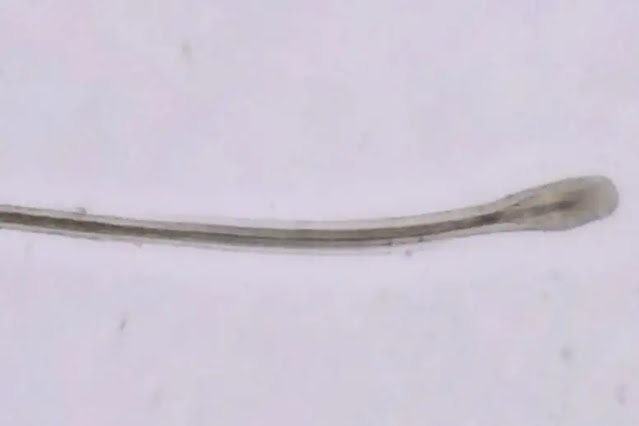Researchers created hair follicles that grew up to 3 millimeters long in one month by modifying mouse embryonic skin cells.
 |
| A hair follicle is derived from hair organoids, which are tiny, simplified versions of organs. National University of Yokohama |
For the first time, mature hair follicles have been grown in a laboratory, in a move that could one day treat hair loss.
Creating hair follicles artificially has historically been difficult, according to Kairbaan Hodivala-Dilke of the Queen Mary University of London, who was not involved in the study. "Different types of cells require different types of nutrients, and when they are outside the body, they require different types of requirements than when they are inside the body."
Hair follicles are typically formed in mammalian embryos as a result of interactions between skin cells and connective tissue.
Junji Fukuda of Yokohama National University in Japan and his colleagues studied hair follicle organoids - tiny, simple versions of organs - to better understand these interactions.
The team was able to boost hair follicle growth by manipulating the structure of the organoids.
"We looked at a variety of conditions, including growth factors, signaling pathway activators and inhibitors, and essential culture medium components," Fukuda says.
⏩
Long-term covid symptoms may include hair loss and ejaculatory difficulties.
The main breakthrough for the team was a culture of mouse embryonic skin cells in a special type of gel, which allowed the cells to be reprogrammed into hair follicles.
"Think of a hair follicle as having the hair down the middle and then layers of epithelial cells around the follicle and other specialized cells," Hodivala-Dilke explains. According to her, the gel allows these cells to grow in a laboratory in such a way that they can climb over and around each other [as they do in the body].
Hair follicles grew for up to a month, reaching a length of 3 millimeters. "This is probably related to the fact that mice have a one-month hair cycle," Fukuda says.
The team is now attempting to replicate the experiment with human cells.
Laboratory-grown human hair follicles, according to Hodivala-Dilke, could one day be used to treat hair loss. "You might be able to take hair from someone with really lush hair and grow it in the lab, and then use those follicles to do a transplant," she says. Existing hair transplants involve moving hair from one part of the body to a thinning or bald area, which can result in scarring.
"This discovery will not cure hair loss, but it will lay the groundwork for someone to potentially do so," says Hodivala-Dilke.
Journal citation: DOI: 10.1126/sciadv.add4603
